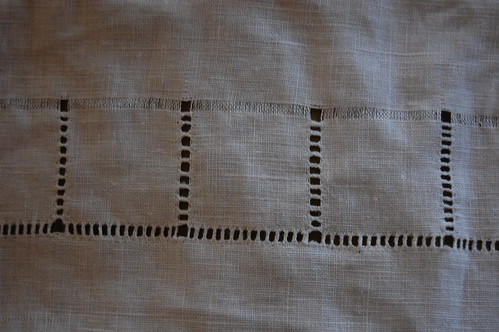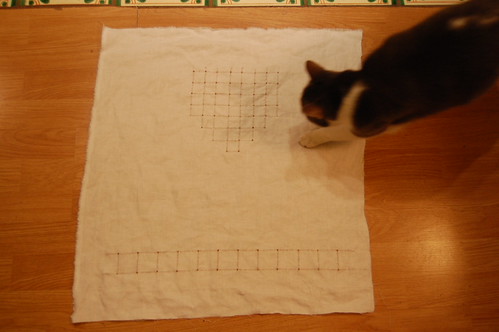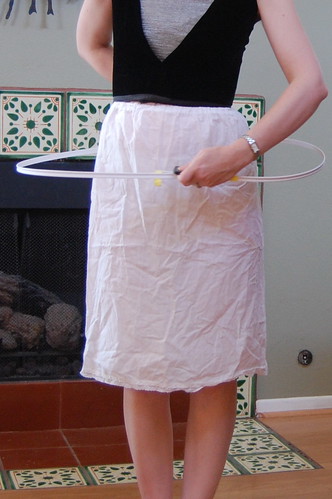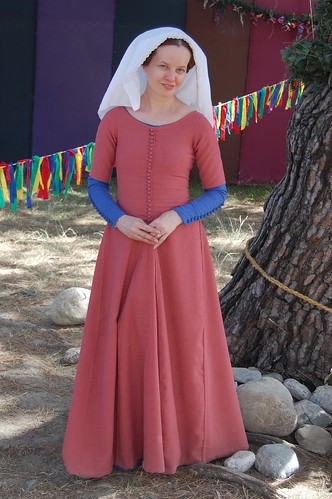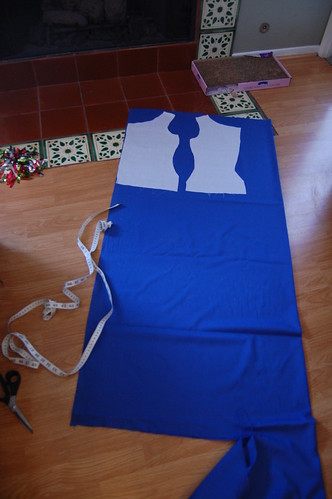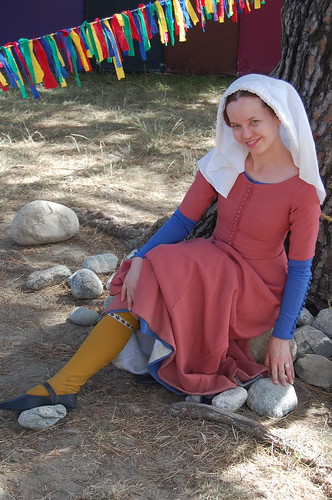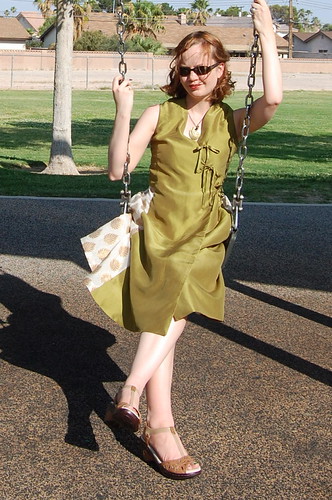
As I was trying on the mockup for my Game of Thrones King's Landing dress, I realized something--it would make a really cute sundress. Due to a change on my upcoming dress--I noticed the underskirts on the show didn't match so I wanted a purple underskirt instead of the matching green--I had plenty of extra fabric. I decided to make my dress a match to my planned dress--just sleeveless, without trim, squared at the top side panels, and shorter. My dress obviously isn't going to be a recreation, but is based on dresses of this style, and would hopefully fit in in King's Landing!
The locket I'm wearing is the sigil for House Caron of Nightsong--a nightingale. Given that that's my last name, it seemed appropriate!
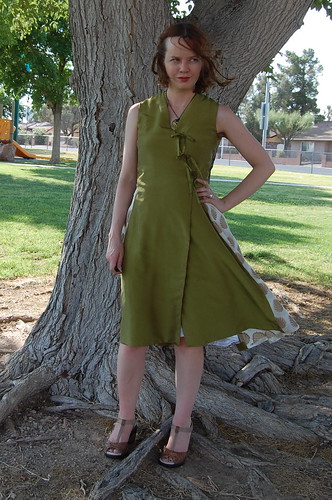
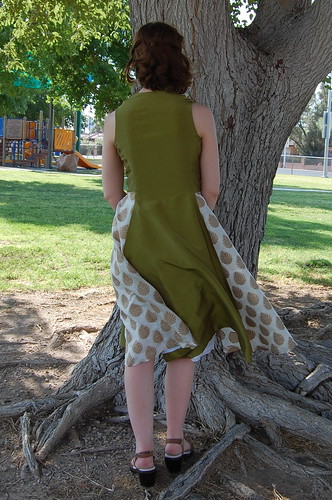
I used my 18th century linen riding habit as a starting point for the pattern. This may seem a little strange, but it had the back neckline, side back seam, and shoulder line I wanted. I drafted out the center back seam, added a princess seam and changed the front shape to crossover.
I'm glad that I got a picture of me looking somewhat murderous. It seems appropriate!
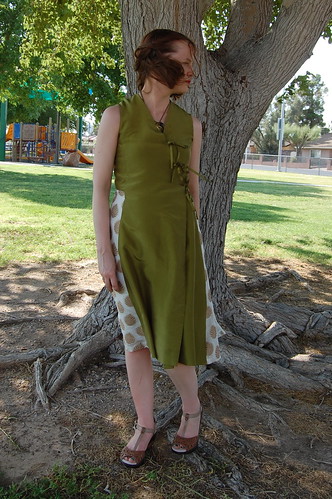
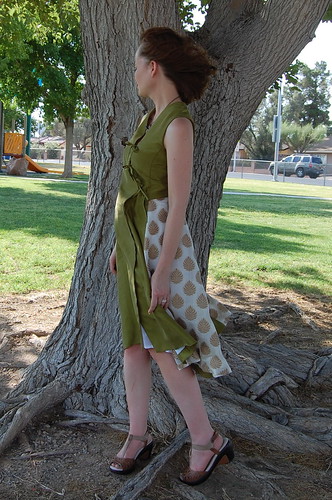
The dress is made of green silk taffeta, silk cotton brocade, and yellow plain silk from Pure Silks. It's lined with leftover linen from my cotehardie from William Booth Draper, and grey linen from Burnley and Trowbridge. The inner silk tie is leftover from my gold 1920s dress and is from Silky Way on eBay.
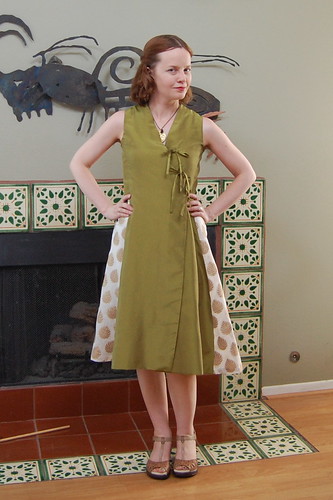
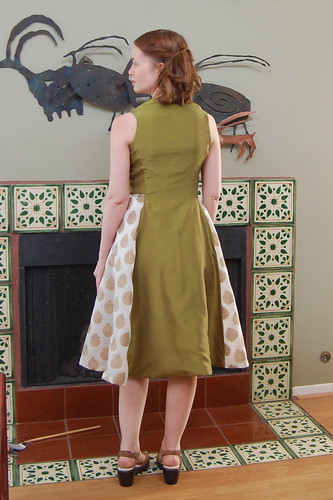
And now some pictures without wind! And 102 degree heat (summer is here--don't mind the calendar). To make the taffeta drape more softly, I washed it with a little baby shampoo. I think the dresses on the show are custom dyed silk taffeta. They have that slightly less lustrous look of washed silk taffeta.
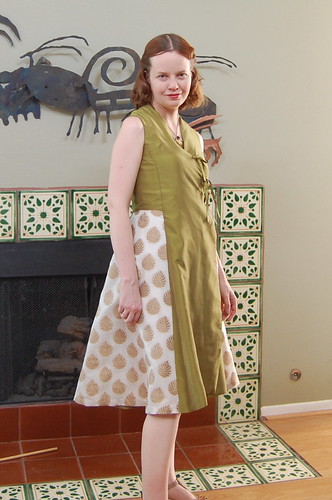
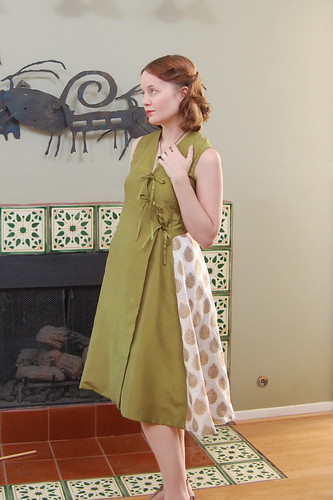
The dress ties at the inside waist and outside. These are the only closures. The green ties are tubes of fabric that I slip stitched shut by hand. Easier than dealing with very narrow tubes!

The inside of the dress. I want to finish a few more seams, but that'll just be the very Victorian hand whipping. The side panels are lined in grey linen, not white. I cut the side panels too small, using the last of the white linen. I'm quite happy that I had grey linen in a similar weight! The side panels are unlined. Since they're slightly sheer, this means I need to wear the dress over a slip. This is also useful since the front does open a bit in the wind!
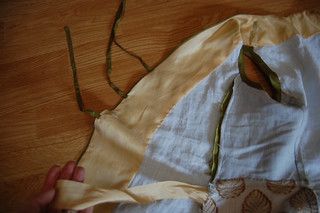
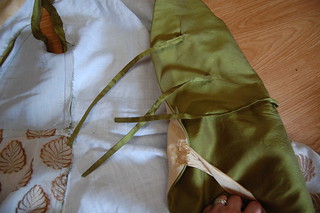
The ties are all sewn on by hand so they'll be invisible on the outside.
I plan on doing a very detailed post once I make the full version. I want to do a few things differently, and though it'll be quite a bit more elaborate, though the basic dress will remain the same.
I'm quite excited to have a version of the dress that I can wear in the real world!

